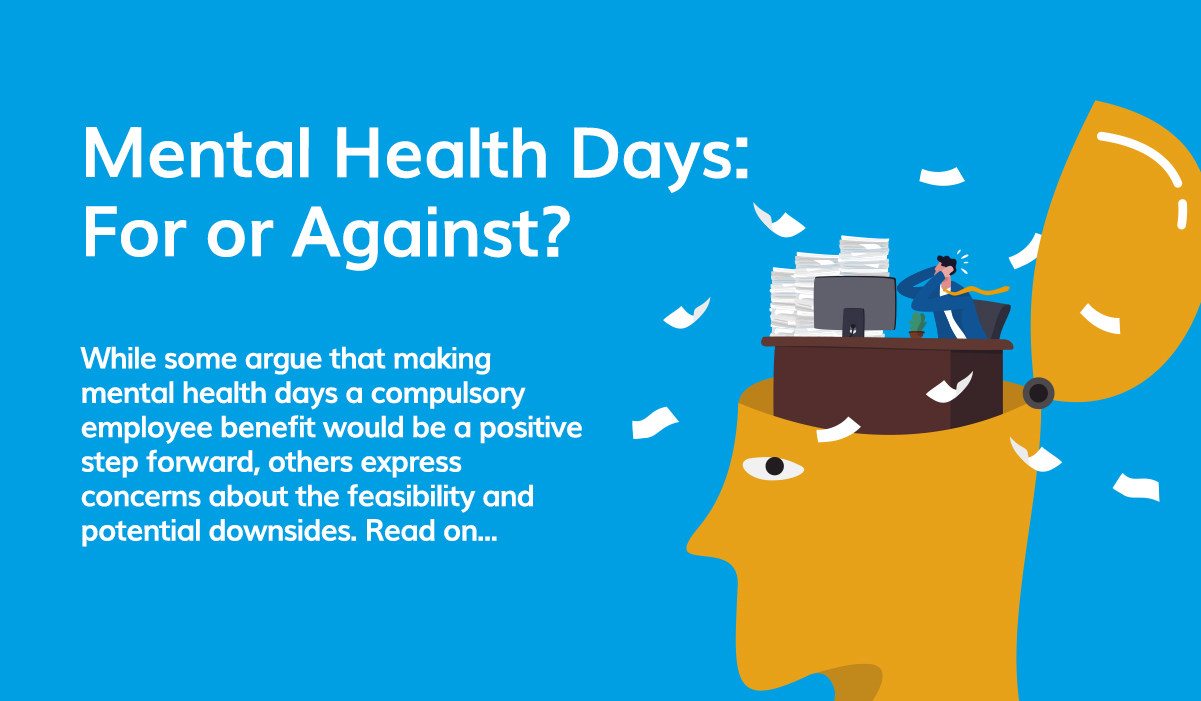In recent years, there has been a growing recognition of the importance of mental health in the workplace. As organisations strive to create healthier and more inclusive workplaces, the topic of mental health days has emerged as a point of contention. There is a debate about the validity of such a benefit. While some argue that making mental health days a compulsory employee benefit would be a positive step forward, others express concerns about the feasibility and potential downsides. In this article, we explore both sides of the coin.

On the one hand, compulsory mental wellbeing vacation leave can significantly contribute to the overall well-being of employees. In fact, taking time off for mental health reasons should be as acceptable and encouraged as taking sick leave for physical ailments. Mental health days provide an opportunity for employees to prioritise self-care, reduce stress levels, and prevent burnout.
One reason why such days are seen as beneficial is that they help to reduce the stigma around mental health in the workplace. By acknowledging the importance of mental well-being and explicitly allowing time off for it, organisations can foster a culture of openness and support. This, in turn, may encourage employees to seek help when needed and promote a healthier work environment overall.
Additionally, mental health days can increase productivity in the long run. Research has shown that taking time off for mental health reasons can lead to increased job satisfaction, improved focus, and enhanced creativity. By allowing employees to address their mental health needs, organisations may ultimately benefit from higher employee engagement and performance.
On the other hand, critics argue that compulsory mental health days may be impractical and potentially counterproductive. One could also claim that such a policy could be easily abused, leading to higher rates of absenteeism and decreased productivity. Most usually, the absence of clear guidelines on what constitutes a mental health day may leave room for misuse, with employees taking time off for reasons unrelated to their mental wellbeing.
Additionally, critics argue that such a perk may burden already overstretched human resources departments. Managing and monitoring the usage of such days can be challenging, particularly in larger organisations with numerous employees. Perhaps instead of enforcing a mandatory policy, efforts should be directed towards creating a supportive culture that encourages employees to prioritise their mental health without the need for compulsory days off.
As both sides of the argument offer up some valid points, it is crucial to strike a balance. Organisations should consider implementing a hybrid approach that encourages and supports mental health days without making them mandatory. This could involve educating employees about the importance of mental well-being, destigmatising mental health issues, and providing resources for employees to seek help when needed. Flexible work arrangements, such as remote work options and compressed workweeks, can also contribute to a healthier work-life balance and reduce the need for mandated mental health days.
In conclusion, the debate around making wellbeing days a compulsory employee benefit is multifaceted. While supporters argue that making them mandatory can foster a culture of well-being and reduce stigma, critics express concerns about the practicality and potential misuse. Striking a balance by promoting a supportive work environment and providing resources for mental health support may be a more effective approach. By prioritising mental well-being in the workplace, organisations can create an environment where employees feel valued, supported, and empowered to take care of their mental health.
What are your views on this? Care to share your opinion? Submit your article here.

